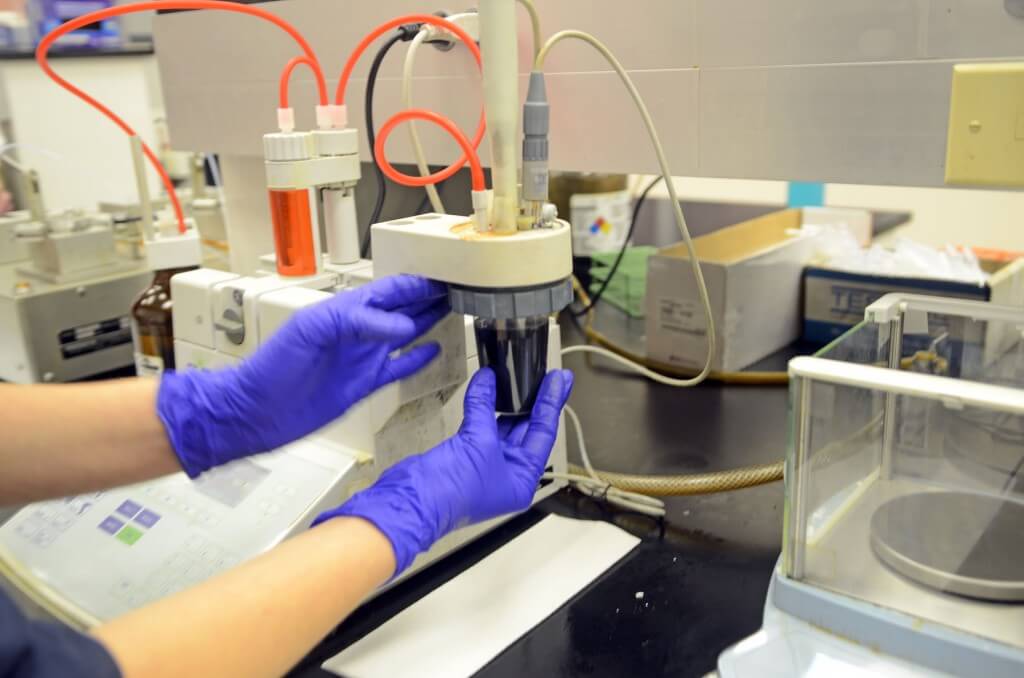Base Number
Base Number (BN) testing is very similar to Acid Number testing, except that the properties are reversed. The sample is titrated with an acidic solution to measure the oil’s alkaline reserve. Measuring the BN can help ensure that the oil is able to protect the component from corrosion due to acid. Many oils (especially motor oils) are fortified with alkaline additives to neutralize acids that are formed as a result of oil oxidation. In diesel engine applications, acid is formed in the combustion chamber when moisture combines with sulfur under pressure.
The BN of an oil is highest when the oil is new and decreases with use. Condemning limits (limit where the oil is condemned for use and should be replaced) are based on the application. As a rule, the BN should not drop below 25 percent of its original value. Base Number values for new engine oils run from 4 to 30 depending on the application.
Operating Principle
A portion of the sample is titrated with an acid solution to a certain end point. The greater the amount of acid needed to reach the endpoint, the higher the base number. ASTM method - D4739.
Significance
Certain oils such as engine oils have an alkaline reserve additive. This test measures the amount of reserve remaining and a recommendation on lubricant health can be made. Base number is highest when the oil is new and decreases with time.
Applications
Diesel and gasoline engine oils are most commonly subject to this type of testing.


